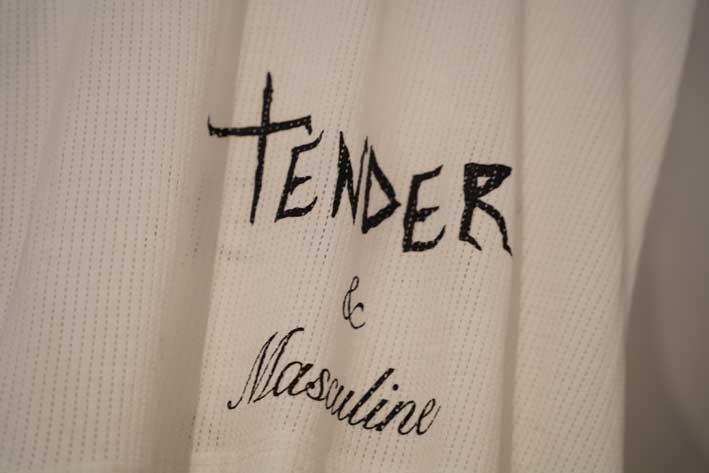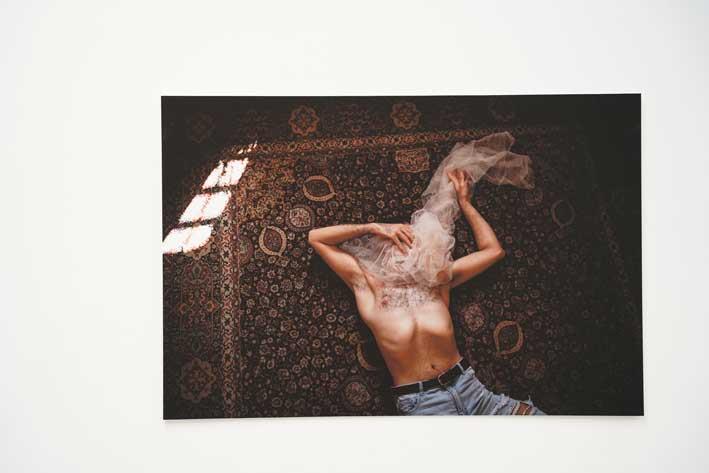What was your thought process as a curator when coming up with the exhibition concept? And, what was your process when selecting the artists?
The idea to curate an LGBTIQ+ exhibition locally has been in the back of my mind for quite a few years now, so moving back to Malta earlier this year seemed like the perfect opportunity to finally push the idea forward. Malta Pride's tagline for 2021 is, You are included and my immediate idea was to bring visibility to the more marginalised members of the community alongside artists from different parts of the world; especially from countries where LGBTIQ+ rights are non-existent.
With that idea in mind, a few names sprung to my mind straight away; other names came through research and following the queer art world throughout the years. When selecting the artists, I wanted to create a clashing cohesion of visuals and narratives in order to highlight the contrasts and similarities of experiences from different walks of life and corners of the world.

You described this exhibition as a "...celebration of what is usually unseen, forgotten about or misunderstood, as well as a recognition that the ongoing fight for LGBTIQ+ rights is global". Why did you choose to use visual arts as media to reflect these issues and what impact do you want this project to have on visitors attending the exhibition?
Even if my intention wasn't for it to be a purely visual arts exhibition, I think coming from a visual arts background played a big role in automatically being more drawn to visual works.
Noah Fabri's Huma min huma? was originally a story, which eventually evolved into a performance art piece. The piece still involves elements of storytelling, but it heavily depends on the audience's interaction. Sound also plays a huge role in some of the works, namely HUSS, Leart Rama's & Daphne Sammut, which will resonate throughout the exhibition. This will create a contrast with the overall theme of the pieces, as well as a familiar environment for some of the visitors.
In fact, I think most visitors, irrespective of their sexual orientation or background, will find some relatability in some shape or form from the works, sometimes from the most unexpected. Regardless, I'm hoping that the works will raise more awareness and continue the discussion on global LGBTIQ+ rights, HIV, disability and mental health within the community.

In this exhibition, you chose artists who worked with different media, however, the most prominent are projections and photographic prints. What topics of discussions do these bring to the exhibition? And, how will these artists portray the different realities they live in?
The topics range from disability, sexuality, HIV and life in countries where being LGBTIQ+ is either illegal or still considered to be taboo. The storytelling methods tend to vary from conceptual to documentary, some of which tend to be more poetic while others are more literal. What really unites the projections and photographs is that they act as a portal into the artist's vision, experiences or perception.
With this exhibition, there will also be a cinema programme - a collaboration with Soura Film Festival. How does this programme complement the exhibition and what can audiences expect?
The Berlin-based film festival highlights queer cinematic talents from the Swana region, complementing the exhibition's running theme of global LGBTIQ+ experiences. The programme will bring fictitious adaptations of experiences faced by people from that region, furthering the discussion of the difficulties faced by LGBTIQ+ people from South West Asia and North Africa.

How do 'Refraction' and the artists participating in this exhibition show the different facets of how the LGBTIQ+ community is affected globally?
The different facets of the community are not just reflected in the content of the different artworks, but also in the different genres of the works. Whether it's through sexuality, poetry, escapism, protest or reality, all the works offer a sense of resilience within the diversity itself.
Earlier, I mentioned familiarity and relatability; it's very noticeable in some of the works that experiences faced in countries where it's still illegal to be gay can mirror experiences faced by members of the audience residing in more liberal countries.
Open until Sunday, 24 October at Spazju Kreattiv in Valletta, this exhibition will be complemented with a programme of events in the next couple of weeks including Noah Fabri's performance piece 'Huma, min huma?' and the Soura Film Festival on 24 and 25 October.
For more information visit www.kreattivita.org